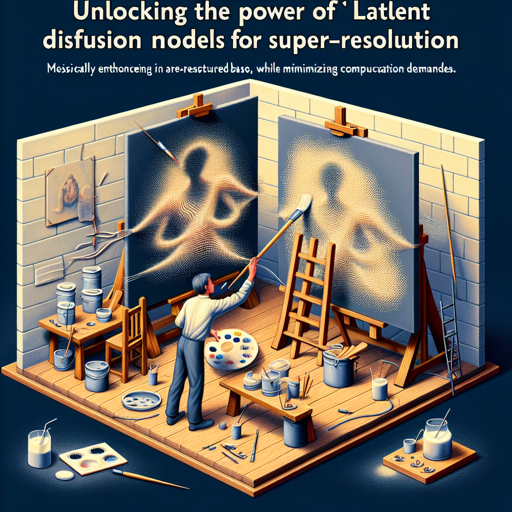In the ever-evolving world of image generation, Latent Diffusion Models (LDM) have emerged as a groundbreaking approach to super-resolution. This technique transforms low-resolution images into stunning high-resolution versions while minimizing computational demands. In this article, we will walk you through the inference process leveraging PyTorch and Hugging Face’s Diffusers library.
Understanding Latent Diffusion Models (LDM)
Think of LDMs as a skilled artist creating paintings. Instead of starting with blank canvas (pixel space), the artist works on a pre-structured base (latent space) that retains essential details of the image, allowing for intricate enhancements with fewer movements of the brush (requiring less computational power). The essence of this methodology lies in managing complexity while preserving detail, resulting in visually high-fidelity outputs.
How to Perform Inference with Latent Diffusion Models
Here’s a step-by-step guide to using the LDM for super-resolution:
1. Set Up Your Environment
First, ensure you have the necessary libraries installed:
python
!pip install git+https://github.com/huggingface/diffusers.git
This command installs the Diffusers library from Hugging Face, which is essential for implementing LDMs.
2. Import Required Libraries
Once installed, you’ll need to import several libraries to help with image processing and model loading:
python
import requests
from PIL import Image
from io import BytesIO
from diffusers import LDMSuperResolutionPipeline
import torch
These imports will help you handle image fetching, manipulation, and interaction with the LDM model.
3. Load the Model
The next step is to identify your device (GPU or CPU) and load the pre-trained LDM:
python
device = "cuda" if torch.cuda.is_available() else "cpu"
model_id = "CompVis/ldm-super-resolution-4x-openimages"
pipeline = LDMSuperResolutionPipeline.from_pretrained(model_id)
pipeline = pipeline.to(device)
By doing this, you’re preparing your model for subsequent inference operations on the available hardware.
4. Download and Prepare Your Image
You now need to fetch a low-resolution image for enhancement. Here’s how:
python
url = "https://user-images.githubusercontent.com/38061659/199705896-b48e17b8-b231-47cd-a270-4ffa5a93fa3e.png"
response = requests.get(url)
low_res_img = Image.open(BytesIO(response.content)).convert("RGB")
low_res_img = low_res_img.resize((128, 128))
This snippet retrieves an image from a URL, converts it to RGB format, and resizes it to 128×128 pixels for processing.
5. Run the Inference
Finally, you can upscale the image using the LDM:
python
upscaled_image = pipeline(low_res_img, num_inference_steps=100, eta=1).images[0]
# save image
upscaled_image.save("ldm_generated_image.png")
This will produce a higher-resolution version of your original image and save it.
Troubleshooting Tips
- Model Loading Issues: Make sure you’re connected to the internet and that the model ID is correct.
- Low Resolution After Upscaling: Consider adjusting the
num_inference_stepsparameter for better results. - Device Compatibility: Ensure that your system supports CUDA if you’re attempting to use GPU acceleration.
For more insights, updates, or to collaborate on AI development projects, stay connected with fxis.ai.
Conclusion
Latent Diffusion Models represent a significant leap forward in image processing and super-resolution. By effectively operating in latent space, they provide high-quality results while being more computationally efficient. As you embark on using LDMs for your own projects, remember that persistence and experimentation are key to mastering this technology.
At fxis.ai, we believe that such advancements are crucial for the future of AI, as they enable more comprehensive and effective solutions. Our team is continually exploring new methodologies to push the envelope in artificial intelligence, ensuring that our clients benefit from the latest technological innovations.

